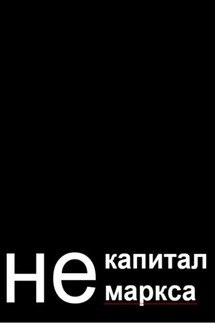The General Theory of Capital: Self-Reproduction of Humans Through Increasing Meanings - страница 64
The relationship between investment and surplus activity/product constitutes the essence of profit. Although profit arises in traditional society, here it is not yet the basis for the organization of self-reproduction and is thus completely random in nature. At this early stage, it is obvious that the source of profit is uncertainty. The primitive division of meanings and the low rate of surplus activity characteristic of subsistence economy limit the possibilities of making profit. Here, production is viewed as a means of consumption rather than as a means of exchange and profit:
“Aristotle insists on production for use as against production for gain as the essence of householding proper; yet accessory production for the market need not, he argues, destroy the self-sufficiency of the household as long as the cash crop would also otherwise be raised on the farm for sustenance, as cattle or grain; the sale of the surpluses need not destroy the basis of householding. … In denouncing the principle of production for gain as boundless and limitless, ‘as not natural to man;’ Aristotle was, in effect, aiming at the crucial point, namely, the divorce of the economic motive from all concrete social relationships which would by their very nature set a limit to that motive” (Polanyi 2001, pp. 56-7).
Possession emerges at a very low rate of surplus activity. At this stage, small possessors cannot yet achieve a sufficient rate of surplus activity to set in motion a cycle of expanded self-reproduction; the appropriation of surplus activity/product remains the prerogative of the state and the nobility, who collect the surplus and spend it on status consumption (palaces and temples) or large-scale structures and administration (irrigation systems, standing army, tax apparatus, etc.):
“At the time of the Spanish conquest the Texcoco, Chaco, and Xochimilco lakes had about 12,000 ha of chinampa fields. Their construction required at least 70 million man-days of labor. The average peasant had to spend no less than 200 days a year to grow enough food for his own family, so he could not work more than about 100 days on large hydraulic projects. As a good portion of this time had to be devoted to the maintenance of existing embankments and canals, seasonal labor of at least 60 and up to 120 peasants was needed to add 1 ha of a new chinampa. The means were different—but the pre-Hispanic basin of Mexico was clearly as much a hydraulic civilization as Ming China, its great Asian contemporary. Long-term, well-planned, centrally coordinated effort and an enormous expenditure of human labor were the key ingredients of its agricultural success” (Smil 2017, p. 99).
The complication of activity implies an increase in mediation, i.e. a growing mass of meanings materialized in the means of activity. A growing meaning mass per unit of product affects both the production of consumer articles and the making of means of production (investment). The prerequisite for increasing mediation is accumulation—saving surpluses and investing them in means of production. Accumulation implies that both the means of production and their making become more complex and the composition of meaning is higher. More complex means of production require broader cooperation and more sophisticated administration.







